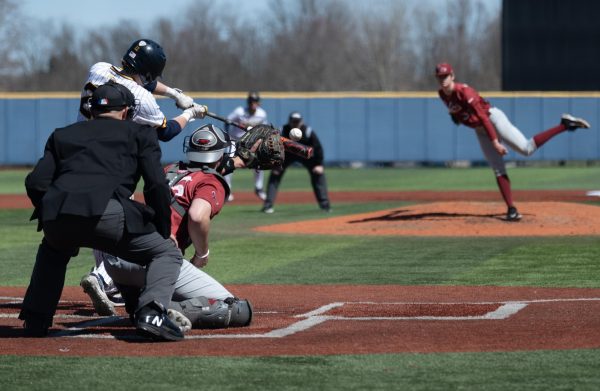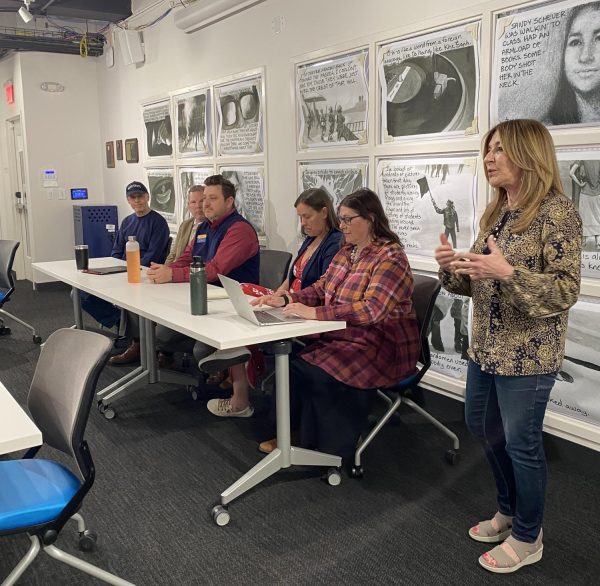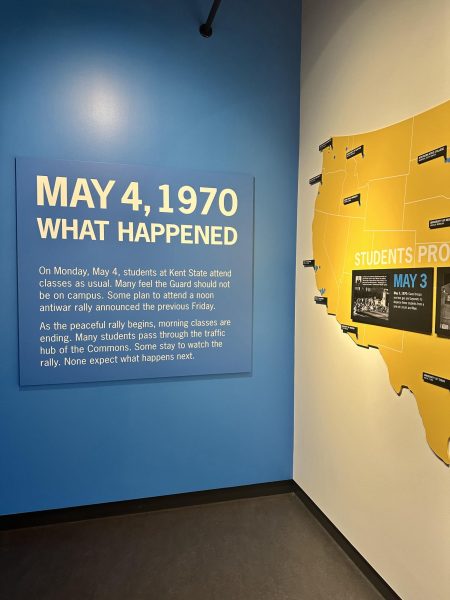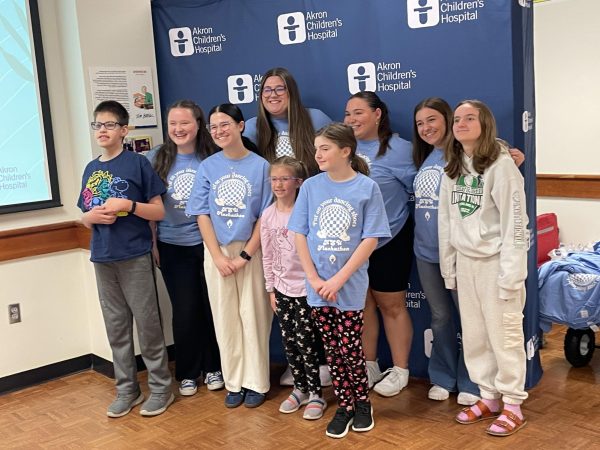Healthy eating is tricky, but possible
March 30, 2005
When hunger strikes, college students opt for the more convenient, though fatty and sodium-rich, potato chips instead of the healthier tofu.
Credit: Andrew popik
Alison Turner
Daily Kent Stater
Pizza, burgers, beer and another slice of pizza seems to be the core diet for college students. This may be the reason why so many students are battling the belly bulge.
More than one-third of college students are overweight or obese, according to the Journal of American College Health.
Healthy eating on campus can be tricky, but it is possible.
Eugene Walters, marketing manager of Dining Services, said healthy eating is available everywhere.
“It’s up to the person to eat healthy and know what is healthy to eat in that manner,” Walters said.
In my quest to get in shape, I contacted the Nutrition Outreach Program in Nixson Hall, which offers a free weight consultation.
I recorded everything I ate in 24 hours in an e-mail food diary to a dietician.
I also had to record the time I spent eating, the location, the activity while eating and my emotional state when I ate.
I had to rate my hunger level on a scale of zero to five, zero being ravenous and five being stuffed.
I e-mailed the diary back to the dietitian, and the next day she recorded the results into a computer program to analyze my diet.
The next day, I went back to sit down and discuss the results with the dietitian.
We discussed everything from calories and protein to vitamins and fiber. The computer program planned a caloric diet for me to follow based on my weight, height and gender.
One graph was printed out with dietary goals for me to follow with a bar graph showing how I was doing.
I was even given a food pyramid guide with how many servings I needed of each group.
The dietitian I met with, Juanita Weaver, gave me information on how to eat healthier in general and in the residence halls.
One simple tip is to eat only when hungry and stop when full. Try to rate your hunger level to be sure if you are actually hungry or just bored. Enjoy your food slowly rather than a quick, face-stuffing fest.
Watch out for portions. Instead of continuously reaching into the potato chip bag, pull a few out and put the bag back.
Always eat within one hour of waking up. For breakfast, try to incorporate cereals that are low in sugar like Cheerios, Wheaties, Raisin Bran and oatmeal. These cereals also are high in fiber, vitamins and minerals.
Fresh fruit, yogurt or whole wheat toast make a great breakfast also.
Try to eat less bacon, sausage, French toast and hash browns.
For lunch and dinner, always opt for the broiled or baked foods. Stay away from fried food.
Made-to-order deli sandwiches or wraps are great, but watch the dressing or mayonnaise. Try to load them with plenty of vegetables and use turkey, ham, lean roast beef or chicken.
Choose marinara instead of alfredo sauce, and be skimpy with the cheese.
Whenever possible, try a baked potato instead of French fries.
Drink plenty of fluids, and don’t consume “empty” calories such as soft drinks, lemonade, punch or alcohol.
Drink at least eight glasses of water a day. Fat-free or skim milk, sports drink, Crystal Light and calcium-fortified fruit juice are all good choices.
For students on the go it’s always a good idea to carry snacks around to prevent overeating when you are home for the night and can binge on whatever you want. Whole grain crackers and cereals make great snacks. Fresh fruit and vegetables, yogurt and string cheese are easy to eat on the go.
The Hub is a popular dining place for students, so I checked out what kind of healthy options the restaurants had to offer.
Sunset Strips offers a Malibu grilled chicken salad and a Santa Fe chicken salad.
Einstein Bros. Bagels has light cream cheese shmears and a lower-carb bagel. They also offer a low-fat tuna sandwich made with Artisan wheat bread.
The Student Wellness and Recreation Center’s Summit Street Cafe offers plenty of healthy options, including grilled chicken and turkey wraps and pitas, tossed salads and fruit salads.
There are many theories for why students don’t make healthy diet decisions in college.
“Students aren’t that different from everyone else. We tend to choose what to eat based mainly on taste and convenience. When we’re busy, we want something that’s quick and easy. The problem is a lot of convenience foods aren’t very healthy,” Weaver said.
Buying and planning meals is a challenge for students who may not have had to make those decisions when living at home.
“I think most students will choose safe things, like French fries for example. But then they learn to branch out and try new things,” Walters said.
For many students, eating is the usual way to associate with peers.
Stress also could be a cause for students’ dietary mistakes.
Weaver said students can live on campus and maintain a healthy diet, but it might not always be easy.
“It still comes down to energy balance. If you take in fewer calories than you use, you’ll lose weight. We need to get away from the ‘quick-fix diet mentality’ and focus on making healthy changes that last a lifetime,” Weaver said.
Contact room and board reporter Alison Turner at [email protected].
























